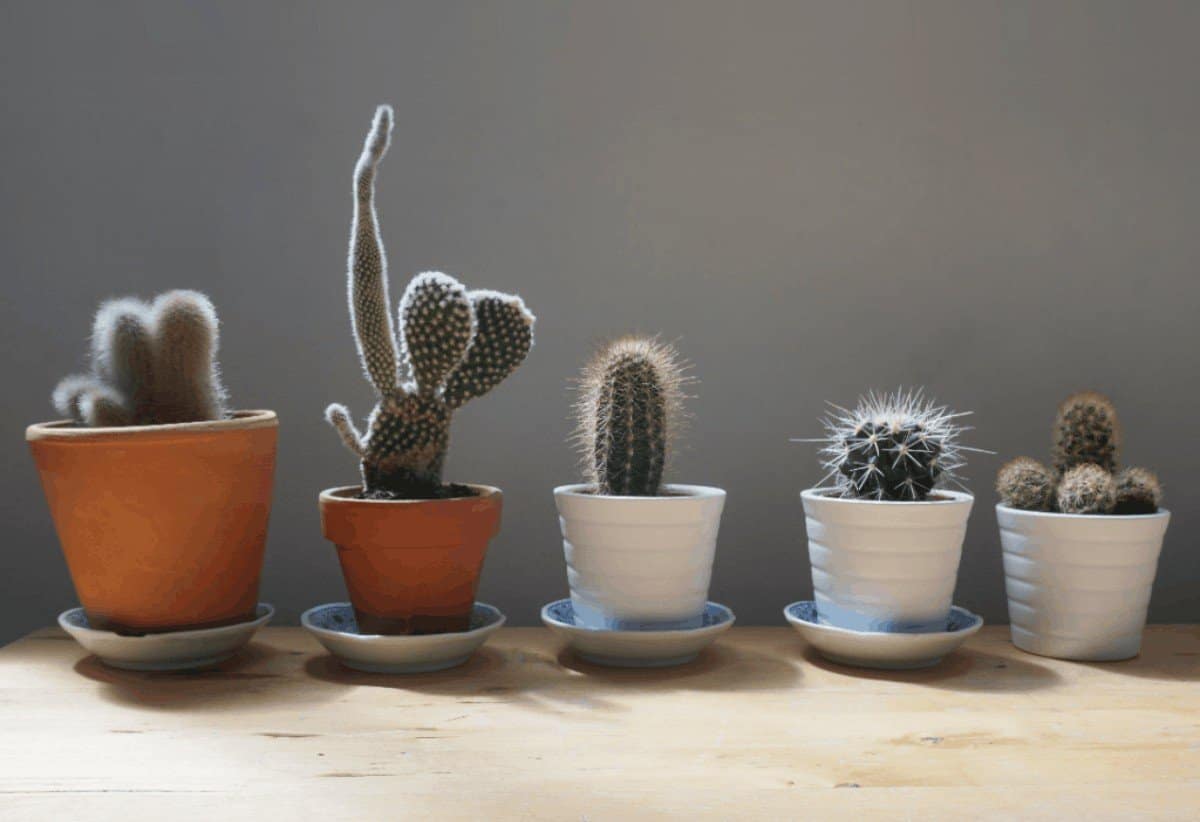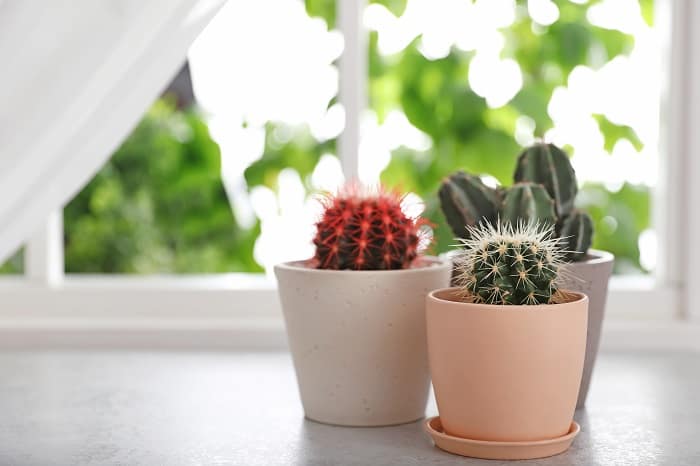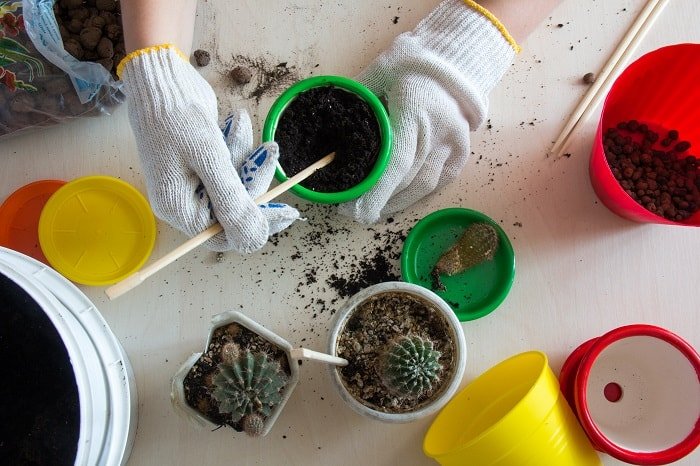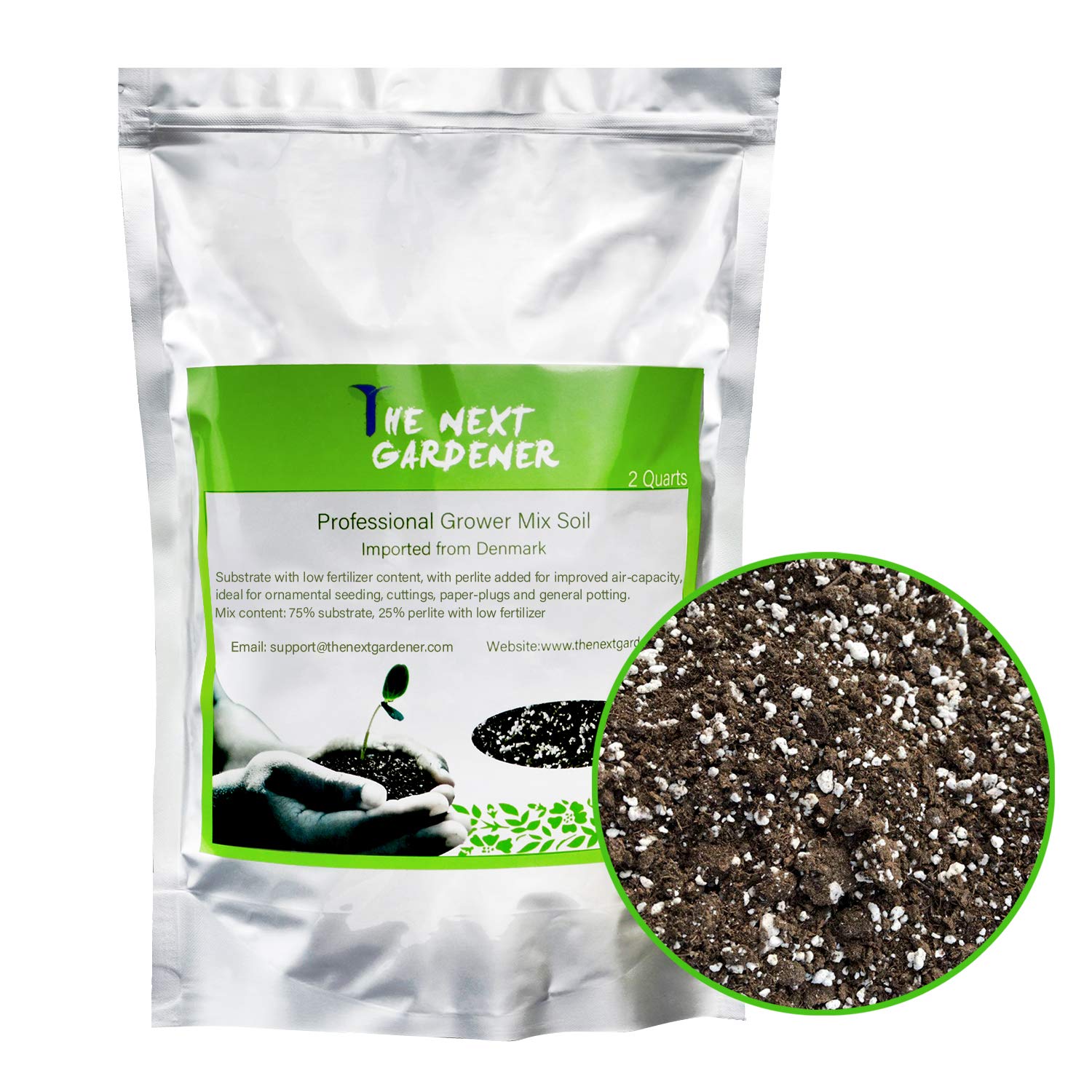Last Updated on January 22, 2023 by Griselda M.
So, you want to know what is the best fertilizer for cacti so your plants can be well-fed and grow healthily. If that is the case, then the information in this blog post is in your favor. The majority of cacti and succulents fall under the category of arid plants used to survive in environments with extreme temperatures and little rainfall. While the succulent can be in hot and cold climates depending on its species, cacti are almost exclusive to deserts. These plants require a specific type of soil designed to be well-draining, filled with the right nutrients, and light enough to allow the roots to grow deep. Also, cactus fertilizer is necessary to grow healthy plants.
When it comes to identifying the best fertilizer for cacti and succulents, you might have some questions. Each product claims to be the best, but all of them can’t be. With this in mind, we have identified the top five options currently on the market. We’ve also included a handy buying guide so you know what to look for when trying to find the best soil for your garden or potted plants.
Plant Food for Cactus – The Importance
Plant food for cacti is important, although these hardy plants are built to endure the harsh realities of their native environment. However, depending on the USDA Plant Hardiness Zone that you’re in, it is important to ensure that your cactus is being properly fed. Therefore, for your benefit, we have highlighted the importance and benefits of cactus plant food and when you should feed them below.
Tips:
- – During the plant’s growing season, it is essential to use the best fertilizer for cacti as it is vital to keep them well-fed.
- – It is advisable to use a time-release mechanism to feed your cacti, especially if there is a chance that you may skip feeding them at the peak of their growing period. You can set it at a three or six-month schedule, depending on the type of succulent you’re growing.
- – For most cacti varieties, their growing season is in the spring to summer months, when regular feeding should be implemented.
- – Ensure that the fertilizer you use has a balance of essential minerals which should include Nitrogen to enhance top growth, Phosphorous for healthy root development, and Potassium to multiply the production of fruiting and flowering.
Best Fertilizer for Cactus and Succulents
When it comes to the best fertilizer for cacti and succulents, there are a few things that you need to take into consideration. These include the fertilizer that would be most beneficial to your succulents and whether it has the correct ingredients to enhance your plant’s growth, as mentioned above. However, there are a few additional aspects that you should take note of. You can opt for store-bought fertilizers or make use of natural plant foods to keep your cacti happy and healthy.
If you opt for the latter, you can go for a light feed of fish emulsion that has been diluted or manure tea as they will aid your succulents in growing their best. Alternatively, a balanced fertilizer (15-15-15), which is a much-preferred option would be ideal for growing lush cactus plants. Concentrated liquid fertilizers should be diluted in this instance so that the roots of your plants do not encounter damage. Any balanced fertilizer that offers the three main components which include phosphorous, potassium, and nitrogen would be the best to grow cacti and other succulents.
Liquid Cactus Fertilizer – The Best Options
If you are in search of liquid cactus fertilizer, then we have the best options for you. These have been tried and tested by us and offer favorable results when used correctly and at the right time. A few things that you should take note of is that using liquid fertilizer as a foliage spray is great, however, it should be applied during the cooler parts of the day to prevent leaf burn. This is usually caused by excessive sun exposure and the application of liquid fertilizer during this time. I mean, we all want to make use of the best fertilizer for cacti but knowing when to apply it is of utmost importance.
Keep the overcast days, early mornings, and late afternoons to feed your plant so that it doesn’t get damaged. Listed below are our picks for the best liquid cactus fertilizer.
Top Picks:
- The Schultz Cactus Plus Liquid Plant Food
- The Miracle-Gro Succulent Plant Food
- The EarthPods Succulent & Cactus Food Organic Fertilizer Spikes
- The Dr. Earth Organic Pump & Grow Succulent & Cactus Food
- The Grow More Cactus Juice
Cactus Fertilizer: What to Look For
Succulents and cacti need a unique mixture of soil to remain healthy. Plus, because each species is different, some will have slightly different requirements than others. In general, you should choose a mixture that meets the following requirements: well-draining, arid, filled with sand and gravel, and between 40 and 80% nutrition.
Well-Draining
Drainage refers to how much moisture is absorbed and kept by the soil when it is watered. Cacti and succulents need to be planted in a potting mix that consists of lighter materials such as sand, gravel, and other small, complex substances. These do not become tightly packed and allow water and moisture to filter through. The soil pulls just enough liquid to keep the roots of succulents and other plants satisfied. Excess is removed so the plant does not drown or become susceptible to root rot.
Arid and filled with sand and gravel are related to the required drainage property of the soil. However, they also add other benefits. Succulents and cacti draw many nutrients from their environment and are designed to live in nutrient-poor areas that necessitate maximum root growth.
How Often Should You Water?
Succulents and cacti need little water to remain happy and healthy. It is recommended you only give your plants water every 7 to 10 days. Although the cacti and succulents can survive with less water, it is a poor idea to restrict liquid during the growing season of spring through fall.
Cactus Fertilizer: Nutrition
Like many other plants, cacti and succulents need a combination of nitrogen, phosphorus, and potassium. For these types of plants, nitrogen is the most important element necessary to keep them happy. It is important to find soil and fertilizer that has plenty of. Avoid using too much filler like wood chips, beads of white cactus fertilizer, or loamy and heavy soil.
Picking a mixture that includes some peat moss is also an excellent idea. Although some gardeners consider it to be a filler, peat moss can create a great environment for roots to grow. For those that don’t know, peat moss is a combination of 380 different mosses which are mixed and blended to create a source of nutrition and decomposing soil for other plants.
How Often Should You Fertilize?
Because of their nature, cacti and succulents need little extra cactus fertilizer to be satisfied. If you are interested in adding extra nutrition to your plants, limit it to a small application every two to three months.
Neutral pH
Finally, it’s important to check the pH of the potting mix. Cacti and succulents, as well as many other plants, work best when planted in neutral soil. On the pH scale, neutral is typically anywhere from 6 to 8. The lower the number, the more acidic a substance is. Higher numbers are basic. If you are struggling to locate a neutral potting mix, it is better to use an option that is slightly acidic rather than basic.
Cactus Fertilizer: Check Out These Quality Options
Perfect Plants Organic Succulent and Cactus Soil Mix
This organic succulent and cactus mix produced by Perfect Plants is ideal for individuals who struggle to maintain the perfect balance of air and moisture in their pots. It primarily utilizes composted pine bark, lime, perlite, and organic peat moss. The bark has been broken down so there are no large chunks that could affect drainage, and the rest of the mixture is well blended. At first glance, Perfect Plants doesn’t look like it would have adequate drainage. However, the soil is so light and fluffy that excess water drips right out.
This mix is completely organic and includes an ideal ratio of nitrogen, potassium, and phosphorous. It can be purchased in containers of four or eight quarts and is remarkably inexpensive, making it great for someone with multiple plants that need to be potted. It is best suited for some of the most common, temperate succulents and cacti, including the crassula campfire, lipstick echeveria, and the zebra plant.
Pros
- Lightweight and aerated
- Rich in nitrogen
- Adequate drainage
- Includes peat moss
Cons
- The aeration deflates rapidly
- Small puddles can appear at the bottom of the pot
The Next Gardener Organic Succulent Mix
One of the best characteristics of The Next Gardener Organic Succulent Mix is how it is handmade in small batches by a company in Denmark. Since the potting mix is ground and composed by hand, it includes many of the elements cacti and succulents need to remain happy and healthy. In this mix, those ingredients include perlite, small rocks, peat moss, and other substrates. This soil is also one of the rare options with a neutral pH (5.5).
The Next Gardener recommends this mix for primarily temperate and arid cacti and succulents like crassula ovata jade, donkey’s tail, and other bonsai species. It should not be used for cold-weather succulents because it does not contain the right ingredients.
Finally, this mix is 100% organic, which is excellent for individuals who are concerned about what they expose their plants to. It comes in containers of two, four, and eight quarts. If you would like to try it out, you can always get a small package and then purchase more later.
Pros
- Neutral pH
- Completely organic
- Contains peat moss
- Comes in multiple sizes
Cons
- Does not contain vermiculite as advertised
- Smells bad
Superfly Bonsai Succulent and Cactus Mix
The Superfly Bonsai Succulent and Cactus Mix are popular for many reasons. It is one of the only soil products that primarily include inorganic components such as rocks and solid but small chunks of wood. A low amount of perlite and peat moss forms the rest of the recipe. This means it possesses more than adequate drainage and will prevent your plants from suffering from root rot, mold, mildew, and the growth of fungus. The downside to having such well-draining soil is you will need to monitor your water levels well.
This is a versatile, organic option handmade in small batches. Superfly works not only on succulents and cacti but also on bonsai. The drainage allows air to reach the roots, supplying extra nutrition. Unlike some other options, Superfly offers a full money-back guarantee. You can try this soil and return it if you are unhappy with the results.
Finally, Superfly Succulent and Cactus mix is available in small batches like 1 to 2 quarts.
Pros
- Primarily inorganic matter
- Allows air to reach the roots
- Made in small batches
- Works for bonsai, succulents, and cacti
Cons
- Only available in small batches
- Low nutrition
Bonsai Jack Succulent Soil
The Bonsai Jack Succulent soil also works for cacti and bonsai. It is another mainly inorganic potting mix for individuals who fear their plants will not experience adequate drainage and air to the roots. It has a soil pH of 5.5, making it a great neutral option. The soil uses rocks and small chunks of perlite, but also incorporates monitor clay and pine bark. It works well for the majority of temperate succulents, including echeveria, crassula, lithops, jade, aloe, haworthia, and the crassula family.
Bonsai Jack is one of the only companies which sells succulent soil in large sizes. When shopping, you can choose from one to twenty-eight gallons so you always have enough to keep your plants satisfied. To ensure you get the highest quality, containers are screened and washed before being shipped. This significantly reduces the chances of getting pests or other problems and also helps lower the possibility of developing root rot and similar diseases.
Pros
- Neutral pH
- Works for the majority of cacti and succulents
- Sold in large quantities
- Screened before shipping
Cons
- Little organic material
Conclusion
One of the perks of growing cacti and succulents is how they have experienced a boom in popularity, meaning you will always have access to specialty soil. Out of these high-quality options for your plants, Superfly is the best choice. It works for almost every species, has the right amount of drainage, and combines inorganic and organic ingredients without going heavy on the roots. The only catch is you might need to buy more than one bag to have enough material for multiple plants. Additionally, adding the best fertilizer for cacti would be beneficial to your succulents.
FAQs
What kind of fertilizer should I use for cactus?
Cacti are not like other plants where they require high levels of nutrients and water. They survive on only a little bit of food. However, they still require a good amount of water and fertilizer to make them grow strong.
The best type of fertilizer for cacti is one that has a low pH level. The best time to apply this type of fertilizer is when the cactus is in its dormant stage (the time when it doesn't need more nutrients).
Is cactus fertilizer good for succulents?
From my research, I found that it is pretty safe to use a variety of cactus fertilizers with succulents. Cactus fertilizers typically contain organic matter that provides nitrogen, phosphorous, and potassium in addition to trace minerals such as iron and magnesium.
I think some plants might not grow well if they have too much or too little of these nutrients. So depending on the plant species you want to grow, you should use a certain type of cactus fertilizer with them.
Cactus fertilizer is a product that comes in powder form and works by releasing nutrients into the soil via the water that it evaporates when applied to the plant. It's often recommended as an alternative to soil or potting mix, but like most fertilizers, you should test out your soil before applying it so that you know what your plant needs.
Do succulents need special fertilizer?
The answer is no. Succulents don’t need any special fertilizer because they are not plants that need to be watered or fertilized regularly.
Succulents have a unique ability to store water in their leaves and stems and they use this water when they need it. They can survive without fertilizers, but succulent enthusiasts often use naturally occurring minerals such as soil, sand and pebbles to help them thrive in the right environment.
How often should you water a cactus?
Cacti are one of those rare plants that require a lot of attention to survive. They do not like being touched or having their soil disturbed, so it is best to leave them alone as much as possible. If you have a cactus make sure you water them every 2-3 days.
In general, the cactus needs about 1-2 inches of water a week. You should check how much soil is exposed with your finger and give them enough water to keep them alive and well-conditioned..
When should I fertilize my succulents?
The answer to this question is quite simple - it depends on the succulent type.
It is best to fertilize succulents according to their need and condition. If they are thriving, then you should water them more often and give them more nutrients. If they are not doing too well then you should water them less often and use less nutrients.
Succulents can be divided into two groups: hardy succulents vs tender succulents. Hardy plants have tough leaves that can withstand a lot of wear and tear, but tend to have shorter lives than tender plants which usually have thinner leaves that are prone to rotting in harsh conditions.
Tony Manhart is a passionate gardener who has been tending to gardens for over 20 years. He takes pride in creating beautiful outdoor spaces with plants, trees, and shrubs that can thrive in any environment. He loves to share his knowledge with others and has taught classes on gardening basics and advanced techniques. He is committed to sustainability, using natural and organic methods to create and maintain gardens. He also works with local organizations to create green spaces for communities. When he’s not gardening, Tony enjoys hiking, reading, and spending time with his family.








